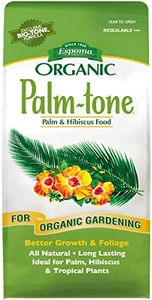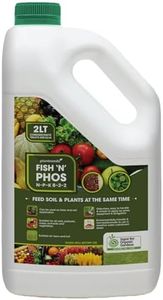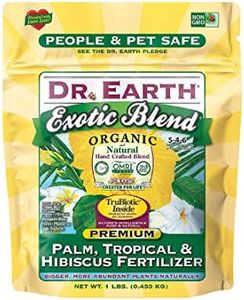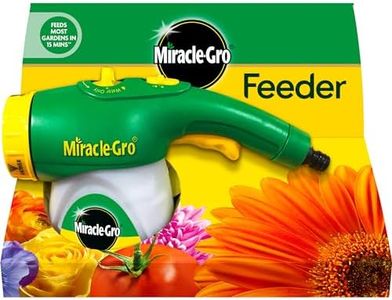We Use CookiesWe use cookies to enhance the security, performance,
functionality and for analytical and promotional activities. By continuing to browse this site you
are agreeing to our privacy policy
5 Best Palm Tree Fertilizers
From leading brands and best sellers available on the web.Buying Guide for the Best Palm Tree Fertilizers
Choosing the right palm tree fertilizer can make a big difference in the health, growth, and appearance of your palm trees. Fertilizers provide palm trees with essential nutrients that might not be sufficiently available in the soil. When picking a fertilizer, consider the type of palm, the soil condition, and whether the plant is indoors or outdoors. Each of these factors affects not just what kind of fertilizer you pick, but how often and how much you use.NPK RatioThe NPK ratio stands for Nitrogen, Phosphorus, and Potassium. These three numbers found on fertilizer packaging show how much of each major nutrient is in the mixture. Nitrogen helps with green foliage, phosphorus supports root and flower growth, and potassium keeps palms healthy and strong. A balanced NPK is important, but palms often benefit from slightly higher potassium to prevent deficiencies. Low NPK (like 4-1-6) is common for palms, helping them avoid fertilizer burn while still feeding them properly. If you're unsure, check what your specific palm type prefers, or choose a fertilizer labeled for palms.
MicronutrientsMicronutrients like magnesium, manganese, and iron are essential in small quantities. Palms are sensitive to shortages of certain micronutrients, especially magnesium and manganese, which can cause yellowing or frizzled leaves. When picking a fertilizer, look for one that lists these micronutrients on the label. If your soil is already rich in some micronutrients, you might not need as much, but many palm fertilizers are designed to prevent common deficiencies.
Slow-Release vs. Quick-ReleaseFertilizers come in slow-release and quick-release forms. Slow-release fertilizers break down over time, giving your palm a steady supply of nutrients for several months, reducing the risk of burning the roots and the need for frequent application. Quick-release fertilizers act fast but can be used up quickly and have a higher chance of over-feeding the palm if not applied carefully. For most palm tree owners, especially beginners, slow-release granules are a safer and more convenient choice, but quick-release may be useful if you need to address deficiencies urgently.
Application MethodPalm fertilizers come in various application methods, including granules, spikes, and liquids. Granules are sprinkled on the soil and watered in, making them easy and effective for regular feeding. Spikes are pre-measured and inserted into the soil, useful for indoor palms or small areas. Liquids can be mixed with water and applied for quick absorption, often used for boosting weak palms. Choose a form that matches the number and size of palms you have and your preferred maintenance routine.
Salt ContentHigh salt content in fertilizers can damage palms by causing leaf burn and poor growth. Some fertilizers, especially those not specifically made for palms, may have higher salt levels. When picking a fertilizer, especially for sensitive or container-grown palms, it’s best to choose one labeled as 'low salt' or specifically safe for palms, as these are less likely to cause stress to your plants.








